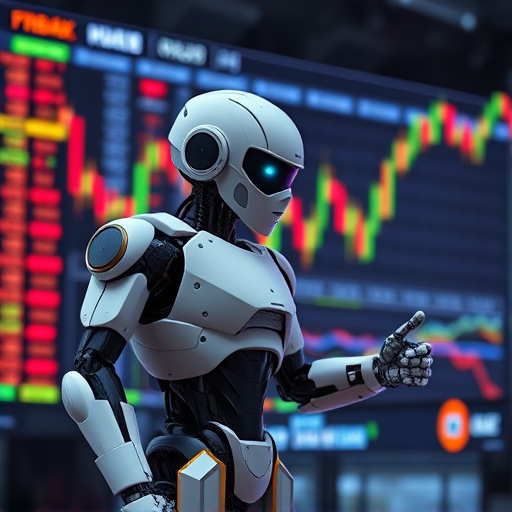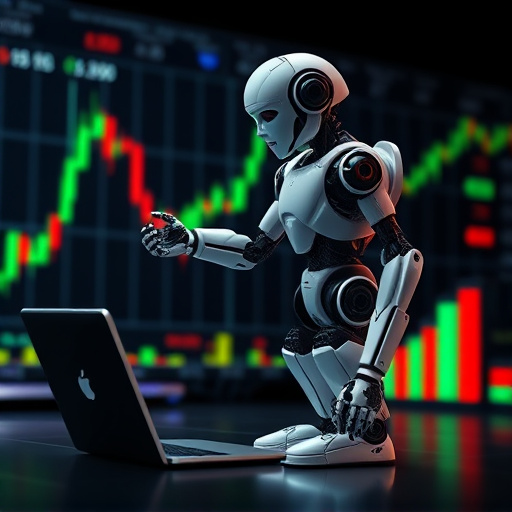Robot trading (algorithmic trading) is revolutionizing Australia's financial sector by leveraging advanced computer programs for swift and accurate trades. Driven by strong digital infrastructure, supportive regulations, and efficient data transmission, it offers enhanced investment performance through improved portfolio management, lower costs, and better risk mitigation. Australian investors benefit from quicker reaction times to market shifts, unlocking potential opportunities in dynamic markets. This shift promises increased transparency, reduced costs, and fresh investment prospects, but requires robust risk management practices for safety and security.
In the dynamic world of investing, robot trading, or automated bots, is emerging as a game-changer. This article explores how innovative trading bots are revolutionizing Australia’s investment landscape. From the benefits they bring to market efficiency, we delve into the rise of automated trading. We also navigate the risks, ensuring investors stay safe in this new frontier. Discover why robot trading is fast becoming an indispensable tool for Australian investors seeking enhanced performance and a smarter approach to their portfolios.
- Robot Trading: The New Investment Frontier
- Australian Market: Embracing Automated Trading
- Performance Boost: Benefits of Trading Bots
- Navigating Risks: Ensuring Safe Automated Trades
Robot Trading: The New Investment Frontier

Robot trading, also known as algorithmic trading, is rapidly emerging as a new investment frontier in Australia and globally. This innovative approach leverages advanced computer programs to execute trades with speed and precision, often based on pre-set rules or complex algorithms that analyze vast amounts of market data. In today’s fast-paced financial markets, robot trading offers investors an edge by automating the decision-making process, allowing for quicker reactions to market changes and potential opportunities.
The rise of robot trading in Australia is driven by several factors. Firstly, the country’s robust digital infrastructure enables high-speed data transmission and advanced computing capabilities. Secondly, regulatory frameworks that promote transparency and innovation have encouraged financial institutions and individual investors to explore algorithmic trading. As a result, Australian investment performance is being significantly enhanced through more efficient portfolio management, reduced transaction costs, and improved risk mitigation strategies enabled by robot trading technology.
Australian Market: Embracing Automated Trading

The Australian market has been undergoing a quiet revolution, embracing the power of robot trading or automated trading bots to enhance investment performance. This shift is driven by the increasing sophistication of algorithmic trading strategies and the growing acceptance of technology in financial services. Automated bots can process vast amounts of data in milliseconds, enabling investors to make faster, more informed decisions with minimal human intervention.
In this dynamic landscape, Australian investors are leveraging robot trading to navigate market complexities, capitalize on short-term opportunities, and achieve higher levels of efficiency. By automating repetitive tasks like order placement, portfolio rebalancing, and even high-frequency trading strategies, investment managers can focus more on strategic planning and analyzing long-term trends. This evolution in trading practices is set to reshape the Australian financial sector, increasing transparency, reducing costs, and potentially opening doors to new investment opportunities.
Performance Boost: Benefits of Trading Bots

Trading bots have emerged as a powerful tool for Australian investors, revolutionising the way they engage in the financial markets. These automated systems, known as robot trading, offer significant advantages by executing trades at speeds unattainable by human traders. With advanced algorithms, these bots can analyse vast amounts of market data in milliseconds, identifying profitable opportunities and generating substantial returns.
The benefits of robot trading are multifaceted. Firstly, it ensures consistent and disciplined execution of trading strategies, eliminating emotional biases that often plague manual trading. Secondly, the speed at which bots operate provides investors with an edge, allowing them to capitalise on fleeting market movements. Furthermore, these automated systems can diversify investment portfolios by executing trades across various assets, thereby reducing risk and enhancing overall performance.
Navigating Risks: Ensuring Safe Automated Trades

Automated trading robots are revolutionizing investment strategies in Australia, but it’s crucial to address the risks involved. These sophisticated algorithms offer immense potential for growth, yet they also introduce new challenges, especially regarding safety and security. With robot trading, ensuring robust risk management is paramount.
Navigating the complexities of financial markets requires careful oversight. Investors must employ measures to safeguard their capital, such as setting clear trade parameters, utilizing stop-loss orders, and regularly reviewing bot performance. By implementing these precautions, individuals can maximize the benefits of automated trading while mitigating potential losses, fostering a safer environment for Australian investors in the ever-evolving landscape of robot trading.
The integration of innovative trading bots into the Australian investment landscape is a testament to the evolving nature of automated trading. As discussed, these advanced systems offer significant advantages in terms of speed, accuracy, and efficiency, contributing to enhanced market performance. However, it’s crucial for investors to remain vigilant in navigating associated risks while leveraging the potential of robot trading. With proper precautions and an understanding of the technology, Australia can continue to reap the benefits of automated trading, ensuring a secure and prosperous future for its financial markets.
